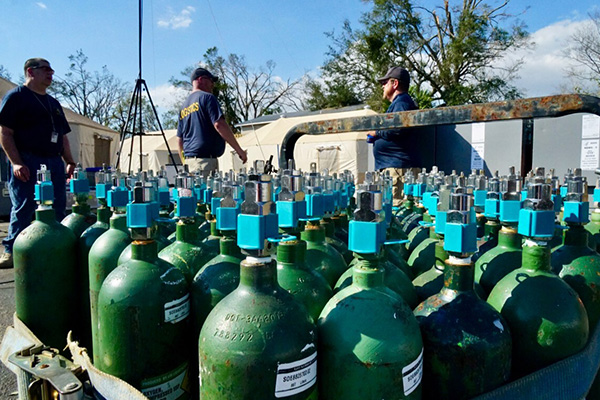HHS emPOWER Emergency Planning Dataset
Why the HHS emPOWER Emergency Planning Dataset is Needed
Millions of Medicare beneficiaries rely on electricity-dependent durable medical and assistive equipment and devices and/or certain essential health care services to live independently in their homes. Severe weather and other emergencies, especially those with prolonged power outages, can be life-threatening for these individuals. Public health authorities and their partners commonly reported that they did not have access to timely information that could help them address the needs of at-risk populations and ensure continuity of care in their communities. In 2014, the HHS emPOWER Program expanded its tools to include the HHS emPOWER Emergency Planning De-identified Dataset that is updated monthly and provided to public health authorities to help them anticipate, plan for, and address the needs of community-based at-risk populations and better support continued access to and utilization of certain essential health care services prior to, during, and after an incident, emergency, or disaster.
Who can access the HHS emPOWER Emergency Planning Dataset
State, territorial, and certain major metropolitan area (MMA) (as defined by ASPR’s Hospital Preparedness Program) public health authority preparedness programs receive a monthly updated dataset. The HHS emPOWER Emergency Planning Dataset is approved for use by the state, territorial and local health departments and their partners, as they deem appropriate, to support targeted emergency preparedness, response, recovery and mitigation public health activities.
What the HHS emPOWER Emergency Planning Dataset Offers
The HHS emPOWER Emergency Planning De-identified Dataset provides monthly updated de-identified totals at the state, territory, county and ZIP Code levels for Medicare beneficiaries who are currently enrolled in the Centers for Medicare and Medicaid Service Medicare Fee-For-Service (Parts A/B) and Medicare Advantage (Part C) Programs. The dataset also provides the total number of Medicare beneficiaries who have had an administrative claim for one or more types of electricity-dependent durable medical and assistive equipment (DME) and devices, certain essential health care services, as well as at-risk combinations data for those who rely on a certain essential health care service(s) and any electricity-dependent DME and devices. Detailed instructions on how to access and use the HHS emPOWER Emergency Planning De-identified Dataset are included in the HHS emPOWER Emergency Planning De-identified Dataset Job Aid, which is available in the Resources box on this page.
How the HHS emPOWER Emergency Planning Dataset is Making an Impact
The HHS emPOWER Emergency Planning De-identified Dataset provides population-level situational awareness that enables targeted emergency preparedness, response, recovery and mitigation activities to protect those that may be rapidly at-risk in the event of an incident, emergency, or disaster. Public health authorities and their partners, as appropriate, can use this data to develop and enhance emergency systems, plans, and processes to support community-based at-risk populations, and to support data-driven decision-making regarding potential shelter and evacuation assistance needs, response asset and resource allocation, and power restoration prioritization.
To learn more about the dataset, select the materials in the Resources box on this page.

